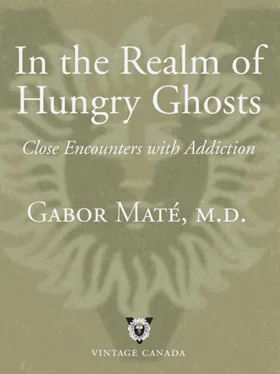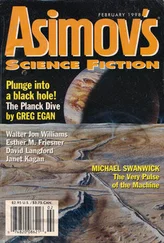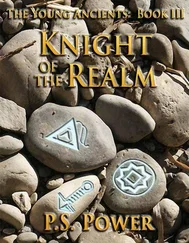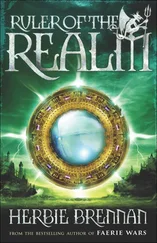
As we have now seen, addiction inevitably involves both opioid and dopamine circuitry. The dopamine system is most active during the initiation and establishment of drug intake and other addictive behaviours. It is key to the reinforcing patterns of all drugs of abuse—alcohol, stimulants, opioids, nicotine and cannabis. 5Desire, wanting and craving are all incentive feelings, so it is easy to see why dopamine is central to nondrug-related addictions, too. On the other hand, opioids—innate or external—are more responsible for the pleasure-reward aspects of addiction. 6
Opioid circuits and dopamine pathways are important components of what has been called the limbic system, or the emotional brain. The circuits of the limbic system process emotions like love, joy, pleasure, pain, anger and fear. For all their complexities, emotions exist for a very basic purpose: to initiate and maintain activities necessary for survival. In a nutshell, they modulate two drives that are absolutely essential to animal life, including human life: attachment and aversion. We always want to move toward something that is positive, inviting and nurturing, and to repel or withdraw from something threatening, distasteful or toxic. These attachment and aversion emotions are evoked by both physical and psychological stimuli, and when properly developed, our emotional brain is an unerring, reliable guide to life. It facilitates self-protection and also makes possible love, compassion and healthy social interaction. When impaired or confused, as it often is in the complex and stressed circumstances prevailing in our “civilized” society, the emotional brain leads us to nothing but trouble. Addiction is one of its chief dysfunctions.
CHAPTER 16

Like a Child Not Released
Yesterday Claire sat in the hall area outside my office and howled bloody murder at the other patients awaiting their turns and, when I opened the door to let someone in, she aimed her invective at me. “You’re not a doctor, you’re the fucking Mafia!” was among the milder of the insults she hurled my way. There was no appeasing her. Kim, the Portland nurse, finally warned Claire that we’d call the police if she didn’t leave off immediately. Sobbing, she made her way out the back door to the Portland’s upper courtyard. At every step or two, she would turn around and scream hellishly at no one in particular, each epithet punctuated by a shower of spittle that sprayed from between her decayed teeth.
That’s how Claire acts when she goes over to the dark side. She’s one of the Portland’s most challenging personalities. New staff are instructed never to let her into the reception office, no matter how positive she seems. One of her most recent borderline episodes counted a printer and the front desk phone system among its wounded.
Much of the time she ambles around like an overgrown child, craving love. “Dr. Maté, where’s my hug?” she’ll shout, running after me in the street. It’s not personal to me; she begs for the same affection from Kim and many other Portland staff who have shown her kindness in the past. Her need for endorphins is as insatiable as is her need for the dopamine hits she gets from cocaine.
Today she’s come to see me for a medical problem and we are calmly discussing the previous day’s events.
“I can treat you in one of two ways,” I say. “Like a totally mentally ill person, who’s not responsible for what she does. Or I can treat you like you’re not a mentally ill person, which is how I do try to relate to you. In that case you are responsible for what you do. Which do you prefer?”
“I don’t know how to answer that,” Claire smiles ruefully.
“Claire, it’s not acceptable that you yell insults at me. It’s not like anything even happened. Or whatever happened, happened in your mind, not in real life. You were screaming at me and at a whole bunch of other people who had as much right to see me as you did.”
Claire bows her head. “I know, but I still don’t know how to answer that.”
“Was it cocaine?”
“Probably. I don’t know.” That means yes.
My voice loses some of its edge. “I really don’t think you’re in control when you’re that way,” I say. “I don’t believe you’re doing it deliberately.”
Claire lifts her eyes to look straight at me. “Of course not,” she says quietly.
“But what you do deliberately is that you use cocaine.”
“Because I’m addicted to it.”
“That’s a choice you’re making,” I reply.
Even as the words leave my lips, I know I’m mouthing a platitude. From a certain point of view, everything we do is a choice. From a scientific perspective, though, Claire is closer to the mark. Her explanation that she is addicted—and that therefore her drug use is not the result of thoughtful deliberation—fits with the research evidence. It sounds like a cop-out, but in neurological terms, it’s not.

“Recent studies have shown that repeated drug use leads to long-lasting changes in the brain that undermine voluntary control,” says an article co-written by Dr. Nora Volkow, Director of the National Institute on Drug Abuse. “Although initial drug experimentation and recreational use may be volitional, once addiction develops this control is markedly disrupted.” 1In other words, drug addiction damages the parts of the brain responsible for decision making.
We’ve already seen that the brain circuits of motivation and of reward are recruited to serve addictive behaviours. In this chapter we’ll consider scientific evidence suggesting that addiction also disrupts the self-regulation circuit s—which the addict needs in order to choose not to be an addict.
We know which brain area controls actions like, say, the rotation of the thumb. If that area of the cortex is destroyed, the thumb doesn’t move. The same principle applies to formulating decisions and regulating impulses. They, too, are governed by specific brain circuits and systems, but in a much more complex and interactive fashion than simple physical movements.
As with motor activities, we’ve discovered which parts of the brain are responsible for volition and choice by studying people whose brains have been injured. When certain brain areas are damaged, there are predictable patterns of impaired rational decision making and diminished impulse regulation. Brain-imaging studies and psychological testing indicate that the same areas are also impaired in drug addiction. And what is the result? If it wasn’t enough that powerful incentive and reward mechanisms drive the craving for drugs, on top of that the circuits that could normally inhibit and control those mechanisms are not up to their task. In fact, they are complicit in the addiction process. A double whammy: the watchman is aiding the thieves.

To understand how this works, we need another glimpse at brain anatomy and physiology.
The human brain is the most complex biological entity in the universe. It has between 80 billion and 100 billion nerve cells, or neurons, each branched to form thousands of possible connections with other nerve cells. In addition, there are a trillion “support” cells, called glia, that help the neurons thrive and function. Laid end to end, the nerve cables of a single human brain would create a line several hundred thousand miles long. The total number of connections, or synapses, is in the incalculable trillions. The parallel and simultaneous activity of innumerable brain circuits and networks of circuits produces millions of firing patterns every second of our lives. It’s no wonder the brain has been described as a “super-system of systems.”
Читать дальше














